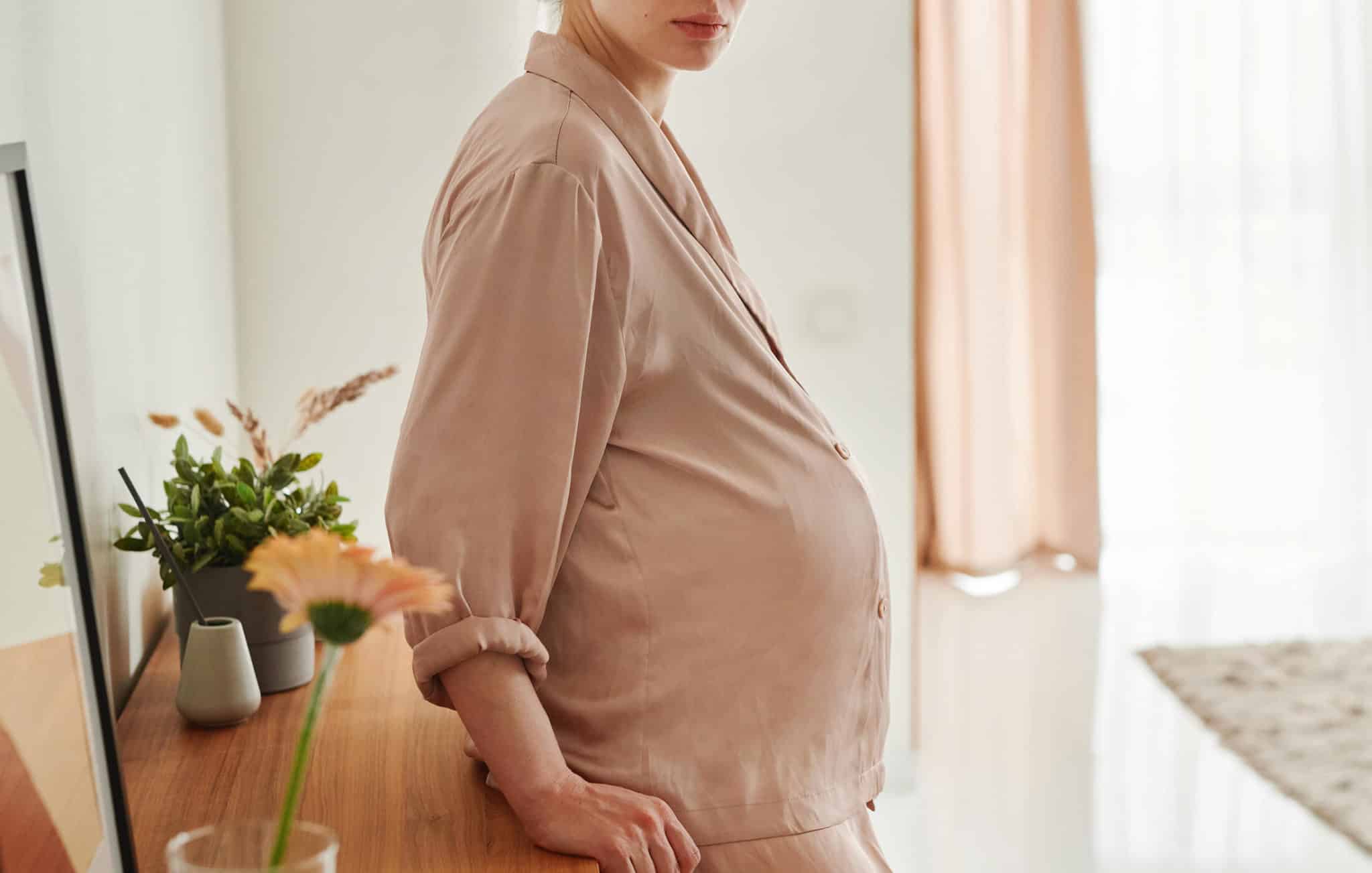What causes pregnancy aches and pains, are they here to stay, and what can you do to alleviate them?
You have gone through the first challenging trimester, where you felt nauseous, exhausted and ready to dump your partner due to being on a hormonal roller coaster. You can finally breathe a sigh of relief… but here starts the pregnancy aches and pains!
Nine months of pregnancy and labour places many demands on your body – including a big impact on your spine and pelvic floor. Pregnancy-related body aches can appear as early as the first trimester, but more often they arrive in the mid-to-late weeks of the second trimester and will either resolve themselves or become more aggravated as you go into the third trimester.
So, what are these aches and pains caused by and what can you do to alleviate them? Elisa Burato, a registered Osteopath specialising in women’s health and pre and postnatal care, and founder of East London clinic Kuu, explains more below.
What causes pregnancy body aches?
As the uterus starts to grow and expand (mostly upwards), its ligaments, namely the ‘sacrouterine ligament’ (the one attaching from the sacral bone at the back of the spine to the front on the uterus) and the ’round ligament’ (attaching anteriorly onto your pubic bone) will start to become relaxed to allow your bump to grow.
Tension in the sacrouterine ligament can cause what is known as an ‘anterior drag’ on your ‘sacral’ and ‘coccygeal’ bones. This leads to discomfort in your coccyx (tail-bone), resulting in that ‘ouchy’ sharp ache when you stand up from a prolonged period of sitting. When the round ligaments are too tight, the pain can also be felt as a discomfort on both sides of the lower abdomen. This pain radiates from the groin upwards and can occasionally be experienced as a sharp sensation – especially with certain movements – such as turning in bed, coughing or standing from sitting.
Is it normal to have body aches and pains in early pregnancy?
It’s very common to experience aches and pains in early pregnancy. This is caused by hormonal changes, especially towards the end of the first trimester. To allow for your uterus to continue expanding as the baby grows and to prepare for birth, the body starts to release a hormone called ‘relaxin’. Relaxin does exactly what it sounds like – it starts to ‘melt’ the intricate structure of your ligaments and loosen them.
The most targeted ligaments, as previously mentioned, are the ones attached to the uterus, but also the ones in our hips. When the joint surface between the bones in our hips becomes more mobile, it can create a dull or quite specific sharp pain on one side of the lower back. Often intense in nature, this pain can radiate all the way to the buttock and to the back of the thigh to roughly knee height. This is often referred to as ‘SIJ’ pain.
To make things worse, you can also experience deep buttock muscle spasm, which creates compression on the ‘sciatic nerve’. This pain can be felt radiating from the buttock all the way to your foot with an exquisite toothache-like linear sensation.

What are the most common body aches in pregnancy?
As well as general body aches and muscle pains in pregnancy you might also experience these other discomforts:
Pelvic Girdle Pain and Symphysis Pubis Dysfunction
Ligament laxity can cause instability of the ‘anterior pubic bones’ (which are joined together by a cartilage-like disc). When these joints come out of line or become too unstable, pain can be felt at the base of the pelvic floor, on the vulva, on the perineum, and on the front of the bones themselves. This starts as a mild ache when you move your legs apart (for example when you turn in bed), and can build to become a seriously debilitating pain when you walk. This is often called PGP (pelvic girdle pain) or SPD (symphysis pubis dysfunction).
Rib pain: Costochondritis
Another problem that may develop during the second trimester is a dull and persistent ache around the lower ribs, often felt on one side more than another. This is called ‘costochondritis’ (inflammation of the cartilage of the ribs). It is mostly due to an increased level of progesterone, but the causes are still poorly understood and it make it very difficult to get comfortable in bed.
Feet aches: Plantar Fasciitis
Your feet might also be a source of discomfort. As the axis of the body changes with the weight of the growing baby, the calf muscles have to work harder against gravity to keep you from falling forward. This can cause them to tighten – creating a pull on the ‘fascia’ of the feet which can strain or tear. When this happens, you might feel a stabbing sensation, especially in the morning when you first stand up. This is called ‘plantar fasciitis’.
The weight of the baby on your pelvic floor, combined with a decreased excursion of your diaphragm, can also affect the ability of your blood to circulate and flow. This can cause puffiness in the legs, feet, and often the hands and result in heavy feeling and leg cramps at the end of the day.
Reflux and heartburn
Another very common complaint that can really affect the enjoyment of your pregnancy, is reflux, also called heartburn. This has unpleasant symptoms – ranging from pronounced acidity after and between meals, to referred pain between your shoulder blades. You may also experience a sore throat leading to throat infection. Again the causes are a mix of lax tissues, affecting the closure of the ‘esophageal valve’, poor diaphragmatic mobility, and changes in acid production due to hormones.
Other common pains
Other common pregnancy pains include carpal tunnel syndrome – a tingling or numbness in your hands. This is caused by extra fluid or swelling putting pressure on the nerves that pass from the hands to the wrists and forearms. Haemorrhoids can also appear for the first time in pregnancy, or if you’ve had them before they can flare up again. Tension headaches can occur in the first trimester as well due to hormone changes and increased blood flow. Harmless stomach pain can also be caused by constipation and trapped wind. Stomach pains can be caused by ligaments stretching as well.
"Luckily all these symptoms are just temporary. They most likely can be helped and improved by introducing some manual therapy"
Are pregnancy aches and pains here to stay?
This all might sound quite depressing! Far from being exhaustive, the list above is descriptive of the most common and less serious ailments, which nonetheless can have a negative impact on your pregnancy. However, luckily all these symptoms are just temporary. They most likely can be helped and improved by introducing some manual therapy.
How can pregnant women relieve body aches?
As you search for support online or with your G.P. you might find a mix of suggestions – ranging from keeping active/modifying activities or behaviours, to harnesses – such as belts or braces that can help to stabilise joints. Unfortunately, quite often, once the pain has moved from a discomfort to a severe ache, exercises and changes in habits can be hard to perform and may give little to no relief.
Manual therapy can range from specialised prenatal physiotherapy, osteopathy, pregnancy massage and myofascial release. The aim of these therapies is to identify the patterns of dysfunction in the musculoskeletal system and through the use of specific techniques such as gentle manipulations and stretches of ligaments, muscles and joints.
This helps to reduce body tensions and better support weight gain and a changing weight distribution. Targeted exercises are also often prescribed to help strengthen the muscles that play a key role in the pregnant body.
What is pregnancy osteopathy?
Osteopathy is a completely natural therapy, which identifies and treats mobility restrictions and aims to reduce the demands placed on the spine, joints and surrounding tissue. Osteopathy can help to prepare your body for the stresses and strains of pregnancy and delivery, and help to aid your recovery postpartum.
Pregnancy osteopathy can help to alleviate many aches and pains, including pelvic floor dysfunction, abdominal weakness, back pain, pelvic girdle pain, and circulatory problems and swelling.
While pregnancy osteopathy is not a substitute for standard OB/GYN care, it can be a useful part of a complete pregnancy routine.

Can pregnancy massage help?
Pregnancy massage can be a deeply relaxing and therapeutic experience for both mother and baby as you go through pregnancy. Recommended after week 12, pregnancy massage can help alleviate aches and swelling, and increase blood circulation.
It can also relieve the discomforts caused by pregnancy – including lower back pain and stress on joints. Other benefits include stabilising hormone levels, soothing the nervous system and preparing you for an easier delivery.
What about other specialist support?
Specialised support can also be useful afterwards, for example if your baby struggles to breastfeed or if you feel you need some help with on-going pelvic pain.
As the literature available on the internet is not always informative, having a background knowledge of which specialists you think will be appropriate to your needs and having them on speed dial can be really useful.
When should you call your doctor or midwife?
The role of MSK (musculoskeletal) specialists is always in conjunction with your midwife, G.P. or obstetrician. It is always a good idea to check with your health practitioner as some simple specialised interventions (especially if performed at the early stages of discomfort) can very often resolve pregnancy pains easily. Working with a MSK specialist can also grant you a smoother passage as your pregnancy progresses, during birth, and the initial period of motherhood.
Like what you read? Book a session now at Kuu London
This is a sponsored post created in collaboration with Kuu London .
For more health & wellbeing click here.






COMMENTS ARE OFF THIS POST